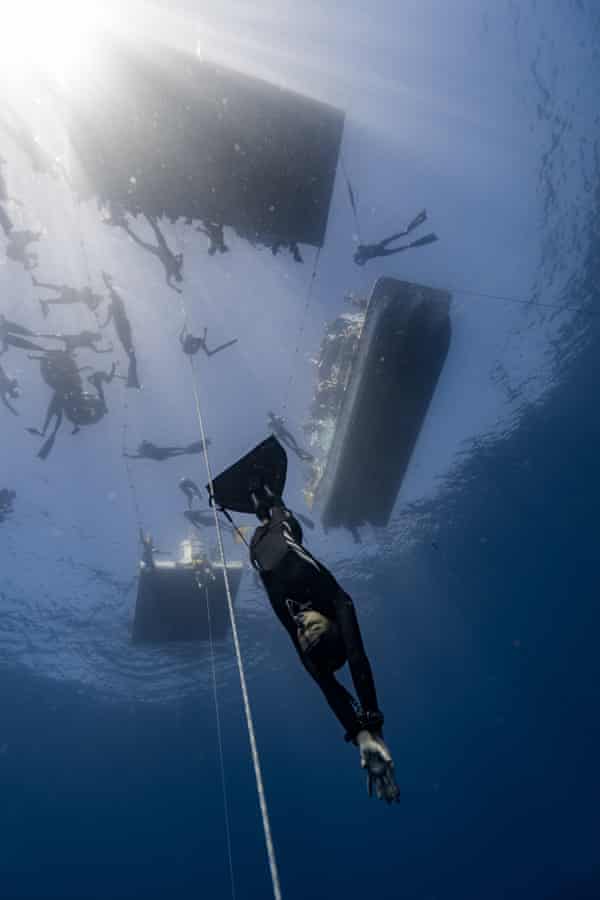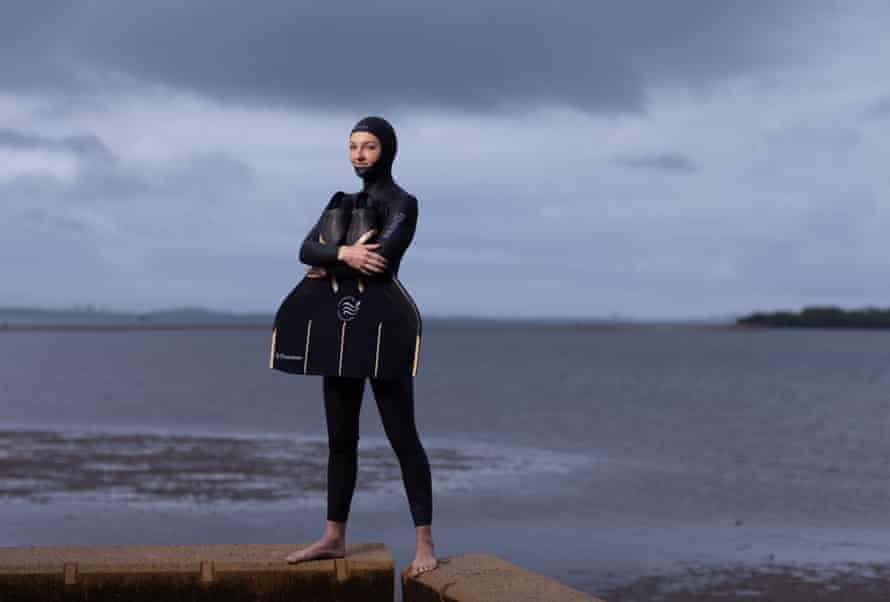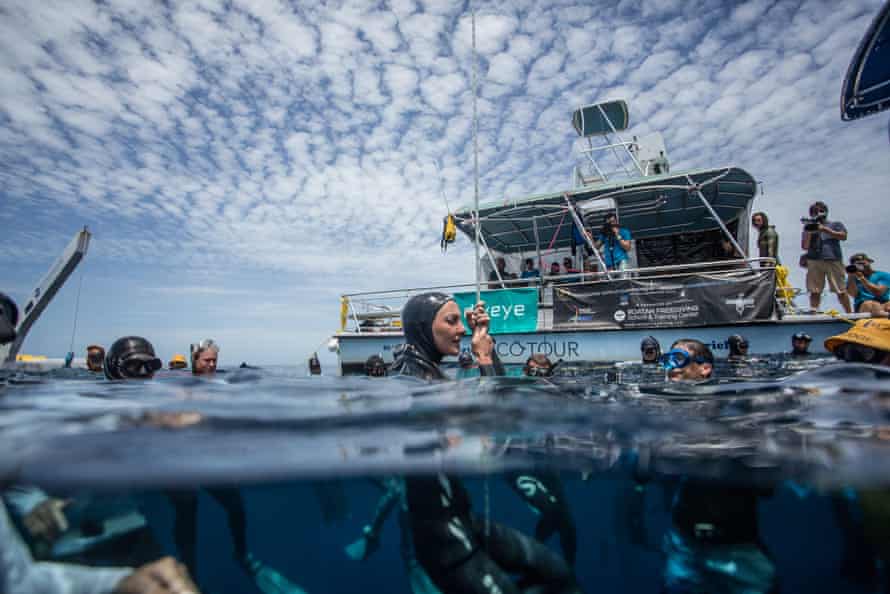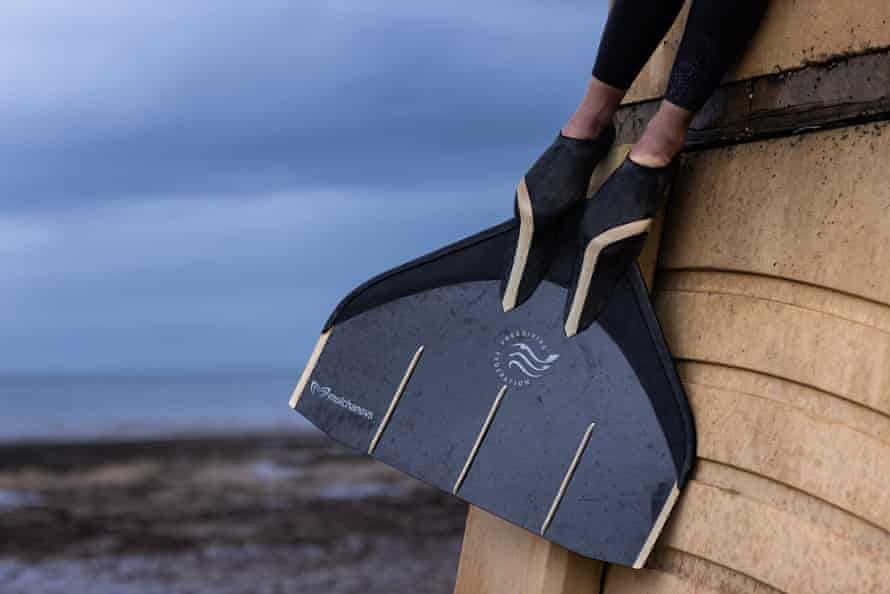TIn years ago, Australian Amber Bourke was in her early 20s and backpacking through Egypt when she discovered something astonishing about herself. In a little village on the Sinai peninsula she came across a place that taught “free diving” – underwater diving without any breathing apparatus – and decided to give it a try.
“I held my breath for four minutes and I dove to 18 meters,” says Bourke, who is the current women’s Australian pool and depth freediving champion. “And both of those things, I didn’t realize it was possible.”
Bourke had been a champion synchronized swimmer when she was a teenager, so already knew she could hold her breath for several minutes at a time. But discovering free diving “just opened my eyes to the possibilities … and I just got hooked on a feeling of diving deeper and wanted to see what I was capable of and how deep I could go.”

By 2018, Bourke had established herself as one of the best competitive free divers in the world, and in deep waters off the coast of the Philippines, was ready to attempt to break the women’s world record in the discipline of “constant weight no fins” .
Considered one of the most challenging forms of the sport, a diver descends vertically in deep water on a single breath, using only muscle strength to propel them downwards. With every meter of descent, the compressive pressure on the body increases, shrinking the spaces that contain air. By 30 meters down – the maximum depth physiologists in the early days of the sport thought humans were capable of reaching – the pressure exerted on the body is four times greater than on the surface and the volume of air inside the body has shrunk to one quarter . Once negative buoyancy is reached, the diver begins to freefall.
Bourke reached a depth of 73 meters – a world record – but a split second blackout once she reached the surface disqualified her. “If you stay underwater long enough, there’s always the chance that your oxygen will drop to a level where your brain will decide to shut down in order to protect itself from brain damage,” Bourke says. “So, in a way, it’s a good thing… but frustrating at the end of a long dive.”
The men’s world record for “constant weight no fins” is 102 meters, taking four minutes and 14 seconds. With fins, it is 131 meters. For the discipline of “static apnea”, where a competitor doesn’t dive but just submerges themselves under water, the longest breath-hold is 11 minutes and 54 seconds. When 100% oxygen is breathed in prior to the attempt, the record is 24 minutes and 37 seconds.
Dr Anthony Bain, a vascular physiologist from the University of Windsor in Canada, has researched the physiology of extreme breath-holding – including conducting experiments with elite free divers – and says many of those at the professional level have larger lung volumes than the average person . Studies in native diving populations, for example the Bajau people in south-east Asia, “have also demonstrated larger spleens, which will theoretically allow for longer breath holds via splenic contraction and release of oxygen bound red blood cells”.
Primarily, however, the ability to survive while submerged for a prolonged time is a learned skill. According to Bain, studies suggest that elite free divers have “enhanced” their Mammalian Dive Response. Theorized to be an evolutionary adaptation – a vestige from billions of years ago when all life was aquatic – it’s a reflex that’s triggered when a mammal’s face comes into contact with water. It prompts a number of physiological responses that promote survival, such as the slowing of the heart rate and metabolism, and a redirection of blood to vital organs, including to the lungs to bolster them against pressure.

While Bourke doesn’t know if she has any innate physiological differences – she has never been tested – she knows that over a decade of training she has learned how to better use the space in her lungs. Even at 70 meters down, she can still “bring in” more air from her lungs.
Free diving is gaining popularity as a pastime, with schools popping up along the Australian coastline, but becoming an elite free diver takes patience.
Progression is slow – it often takes years to achieve several extra meters in depth, as the body becomes accustomed to pressure. “When I first dove to 30 meters deep, I really felt a lot of pressure on my body, and especially on my chest, it feels like you’re being crushed,” Bourke says. “But now, diving to 70 meters, I don’t feel that pressure at all.”

Photograph: Alex St. Jean/Daan Verhoeven
The best adaptation though is psychological: developing a conscious ability to withstand the urge to breathe. According to Bain, an untrained person starts to undergo “involuntary breathing movements” after no longer than two to three minutes underwater, when the “body has barely desaturated with oxygen”. Elite free divers, however, are able to mentally push through this point, holding their breath until they “majorly desaturate their blood of oxygen”.
Among free diving instructors, like Clinton Laurence from the Gold Coast, who is also a clinical psychologist, psychological strategies such as mindfulness are key to training. “That is where you observe the thought, ‘I have to breathe’,” he says. “But you just observe it. ‘Yep, there’s that thought again. That’s OK.’ And you just keep going.”
Bourke says she enters a “meditative state” by slowing her breathing before she enters the water. Then, “it’s about maintaining that relaxed state, and for me, that’s really about staying in the moment and not thinking too far into the future, because if you think about how long you’re planning to stay under water and how deep you’ re planning to dive, then it’s easy to get overwhelmed and to panic.”

While the pandemic has stalled most international competitions, Bourke is still training – she does long sessions swimming underwater in the pool around four times a week, plus working out in the gym – alongside her work as an electrician and a free-diving instructor. Once competition resumes, she’ll be back pursuing world records.
“When I first started, I was like, ‘I didn’t even know this was humanly possible’, but it’s just amazing what humans can do.”
www.theguardian.com
George is Digismak’s reported cum editor with 13 years of experience in Journalism